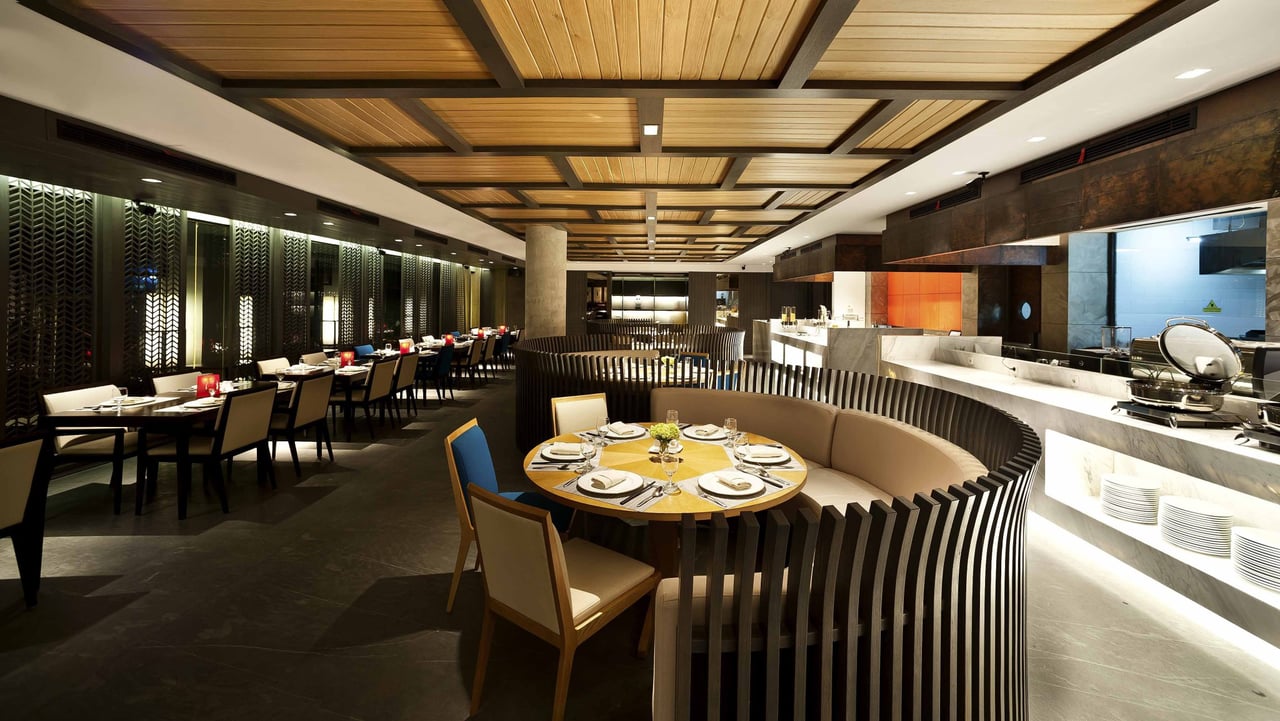Experience is key when decorating hotels, bars or restaurants. Lighting is a crucial factor that shapes the setting and it contributes to a great experience. The right choice of lighting ensures that a room and all of its architectural elements get just the attention they need and it contributes to a consistent whole. Discover what you should pay attention to when picking out the right lighting for hotels and restaurants.
Light and design
Often the choice of lighting is considered a finishing touch, but actually it’s the basis of a good architectural design. The right lighting makes or breaks your location, so it already deserves your attention when still in the designing phase of your architectural plan. As an example think about tables in a restaurant. To provide every table with the perfect backlight, it’s necessary to bear in mind the placement of all lighting to create an even light distribution for every single table.
Using Light as guidance
When people walk into a hotel or restaurant it’s important to give them a clear overview of where to go and where they can find something. In a hotel it’s essential that the reception is put as a central point so your guests can be assisted instantly. By working with focal points and varying in brightness you can determine which parts of the area you want to highlight or emphasize. By doing this your guests get a clear, but subtle directional indication.

Working with different layers
Each layer in your lighting fulfills a different function in your location. For example, one type contributes to the visual, aesthetic aspect. While another type of lighting is essential to produce additional functional light. The first and most important light source is ‘natural light’. This type of light determines the general light level in your area and forms the foundation for other layers.
In addition we also have task-orientated lighting. This functional type of lighting is placed at occupied places where it’s simply necessary to offer extra lighting, such as receptions, kitchens, cash registers…
Then there's accent lighting that provides extra emphasis on specific elements of your interior. Ranging from upward wall lighting to lighting behind your bar. Lastly, decorative lighting completes the list. It provides your hotel or restaurant with a personal touch. The functional aspect is less important here, accent lighting is all about creating a unique personality. All these types of light should be used in a balanced way in order to make the space come into its own.
Comfort is key
When choosing lighting, always keep in mind the comfort of your customers. A restaurant or bar may be innovative, but when your customers can’t read the menu or can’t see the food, your concept is useless. It’s best to avoid reflections by placing the lighting outside the natural field of view of your guests. Reflective objects such as mirrors or smooth surfaces should be placed with extra care, make sure your customers do not experience any inconveniences.

Flexibility in every situation
Throughout the year hotels and restaurants are frequently adding new elements to their interior to respond to the seasons. When it’s winter people are adding Christmas decorations, during springtime flowers are usually more popular. Different interior adjustments requests different types of lighting. When choosing your desired type of lighting it’s important to choose a flexible and adjustable solution, in order to easily adjust the light intensity and possibly the direction or placement, depending on the situation.
There are a lot of factors that contribute to the perfect lighting solution. A lighting designer can be a huge asset to your project. A lighting designer provides expert lighting advice to achieve an optimal result together with you.

